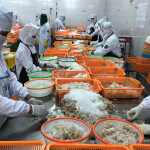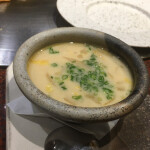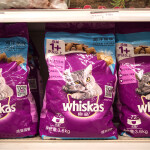Smithfield, Rhode Island, U.S.A.-based CAI Software acquired Molde, Norway-based Maritech on 28 February, creating one of the seafood industry’s leading enterprise resource planning (ERP) software providers.
In a joint interview with SeafoodSource, CAI Software CEO Brian Rigney and Maritech CEO Odd Arne Kristengård discussed the acquisition and the combined entity’s future plans.
SeafoodSource: What is the backstory to this acquisition?
Rigney: It's been a long time coming. It started off with a cold call at Seafood Expo North America two years ago when I introduced myself to a couple of Maritech folks on the show floor. This, in turn, led to a series of off-and-on discussions over the last two years. It went from the acquisition not making sense to figuring out how it made sense and then determining if we had a shared vision for the future. And then, of course, the financial details come into the picture eventually. That last part took around six months.
SeafoodSource: Both companies have grown a lot through acquisitions in recent years. How did each company’s growth plan result in this move?
Rigney: When I joined the company five years ago, the goal was to grow by way of acquisition and organic growth. Since then, we've been focused on building a supply chain software company that is really end to end in two verticals: manufacturing and food and beverage.
You might suspect that those two are very different, but in fact, they're very much the same. All of our systems are mission-critical; our customers cannot ship product without them. They're very production-oriented, meaning Seasoft, as an ERP system, has a presence on the production floor – where fish is being cut and where lobsters are being packed.
Similarly, our manufacturing software is also very production-oriented. As we began to grow, we made a series of acquisitions on the manufacturing side, but I've been really looking to make this acquisition on the food side because it accelerates our ability to invest in the product, accelerates our growth into other markets, and it allows us to extend to more customers in North America who we might not otherwise have been able to meet.
Kristengård: Maritech has been, for the last few years, focusing a lot to build out its seafood supply chain platform, going from customization for Norwegian customers to more standardized cloud-based solutions, covering the whole seafood supply chain.
We have out-of-the-box, best-practice solutions for the seafood industry, and that can be attractive instead of spending thousands of hours to convert your generic ERP into seafood.
We have wanted to become a global company. This is perfect timing in showing how far we have come now on the platform and on the international stage. Given the resources that CAI can provide us taking the next step in our journey, especially expanding into North America, it’s happy days now at Maritech.
SeafoodSource: Can you provide more detail around how the two companies will be combined? Will CAI’s Seasoft technology and Maritech’s tech be combined in any way?
Rigney: From a product perspective, the two products – Seasoft and Maritech – will remain separate. Seasoft has its place with middle-market and lower-middle market seafood producers, distributors, and suppliers – generally those who both process and do recipe-based production as well but also really need a general ledger system.
Maritech doesn't have a general ledger system, so [we can target their products to] middle-market larger companies – maybe in a different part of the supply chain – that already have a financial general ledger system in place but need large production capacity traceability, warehousing software, and other things that Maritech has.
A lot of our prospective customers may have recently moved to some other financial ERP system, but those systems are good at finance yet have nothing that works on the production floor; that's where Maritech comes in. So, [the two companies can come] together nicely to meet the needs of the market.
SeafoodSource: What role will the seafood industry play in the combined company’s future?
Rigney: The seafood industry is critical to our coordinated overall vision. What's interesting is that some of Maritech’s customers are our customers’ vendors, meaning Maritech has a number of customers in Norway and elsewhere that serve as vendors to people who use Seasoft today. So, when you're talking about building out a full supply chain system, this is part of that vision.
Kristengård: We have customers in Norway who are exporting to North America. Now, together with CAI, it gives us the opportunity to really focus on giving those customers an even better experience with our solutions going forward.
SeafoodSource: What is the importance of technology to the seafood industry, and how does CAI plan to shape that discussion moving forward?
Rigney: On a broader basis, CAI has been investing aggressively recently in ...








